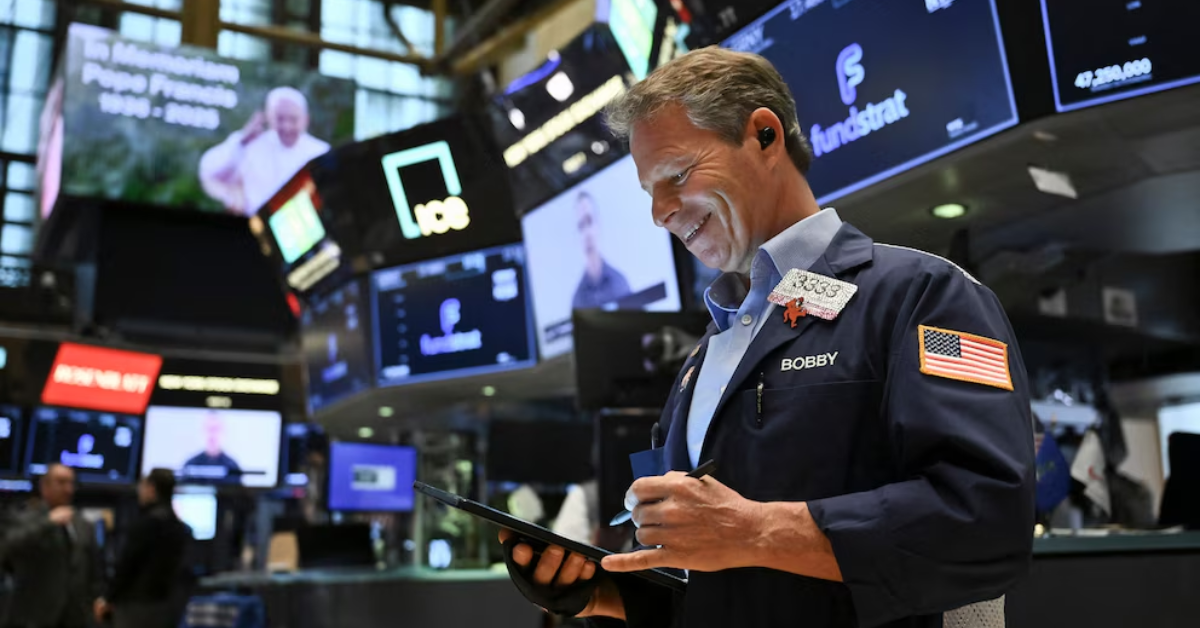The US stock markets dropped once again on Monday as former President Donald Trump launched another harsh attack against Federal Reserve Chairman Jerome Powell. Trump criticised Powell on social media, calling him “a major loser” and blaming him for not cutting interest rates.
In his post, Trump wrote: “There can be a slowing of the economy unless Mr. Too Late, a major loser, lowers interest rates, NOW.”
Trump has been increasing pressure on Powell and the Federal Reserve to lower interest rates. He believes that lower rates could help balance out the effects of the new tariffs he has introduced. These tariffs have raised concerns about rising inflation, and Trump wants the Fed to intervene by reducing interest rates.
However, the markets seem to be reacting negatively to Trump’s comments and pressure. Instead of bouncing back, major stock indexes went down sharply. The Dow Jones dropped by 2.5%, the Nasdaq Composite also fell by more than 2.5%, and the S&P 500 went down by 2.4%.
Even top tech companies, such as Tesla and Nvidia, saw their stock prices fall. At the same time, the value of the US dollar dropped to its lowest level in several years against most major global currencies.
Previously, the markets had started recovering after Trump had announced a 90-day pause on his plan to impose heavy tariffs, which he called “reciprocal tariffs.” But now, those gains have mostly disappeared because of Trump’s latest remarks against Powell.
Jerome Powell is usually very careful and calm in his public comments. However, he recently discussed the potential negative impact of Trump’s tariffs. He warned that the tariffs could make things more difficult for the Federal Reserve and said that there are no plans to reduce interest rates anytime soon.
Powell said on April 16, “Tariffs are highly likely to generate at least a temporary rise in inflation. The inflation effects could also be more persistent.”
Inflation in the US had peaked at 9% in June 2022. Since then, it has been decreasing, primarily due to the Fed’s gradual and steady interest rate adjustments. The Federal Reserve’s goal is to keep inflation around 2%, and it also tries to maintain strong employment levels.

Powell often talks about the Fed’s “dual mandate”—to control inflation and to support employment. Raising interest rates usually helps lower inflation, but can also increase unemployment. However, over the last few years, the Fed has managed to bring inflation down without causing a big rise in unemployment. The current unemployment rate is about 4%. Inflation was down to 2.4% last month, but this number doesn’t include the latest impact from Trump’s new tariffs.
The Federal Reserve is meant to operate independently and without political interference. But Trump has recently suggested that he might remove Powell from his position, even though Powell’s term runs until May 2026. Trump said on social media, “Powell’s termination cannot come fast enough!”
If Trump does try to remove Powell, it would be an unusual and controversial move. It could also make Wall Street even more unstable. Krishna Guha, a top analyst at the firm Evercore ISI, said in an interview with CNBC that if Trump actually fires Powell, there would be a “severe reaction” from the markets.
“I can’t believe that’s what the administration is trying to achieve,” Guha added.
Right now, it’s not even clear if Trump has the legal power to remove Powell. The U.S. Supreme Court is hearing a case that could grant the president more power to fire federal officials before their terms expire. However, it’s still uncertain whether that ruling would apply to the Federal Reserve chair.
Last week, Powell reminded everyone that the Federal Reserve’s independence is protected by law. “Our independence is a matter of law,” Powell said. “We serve very long terms, seemingly endless terms, so we’re protected by the law.”
Even so, Trump’s team is still exploring their legal options. On Friday, White House economic adviser Kevin Hassett told reporters that they are still studying whether they can legally remove Powell from his position. The next Federal Reserve meeting, where officials will discuss interest rates, is scheduled for May 6-7.
Disclaimer: This article has been meticulously fact-checked by our team to ensure accuracy and uphold transparency. We strive to deliver trustworthy and dependable content to our readers.


